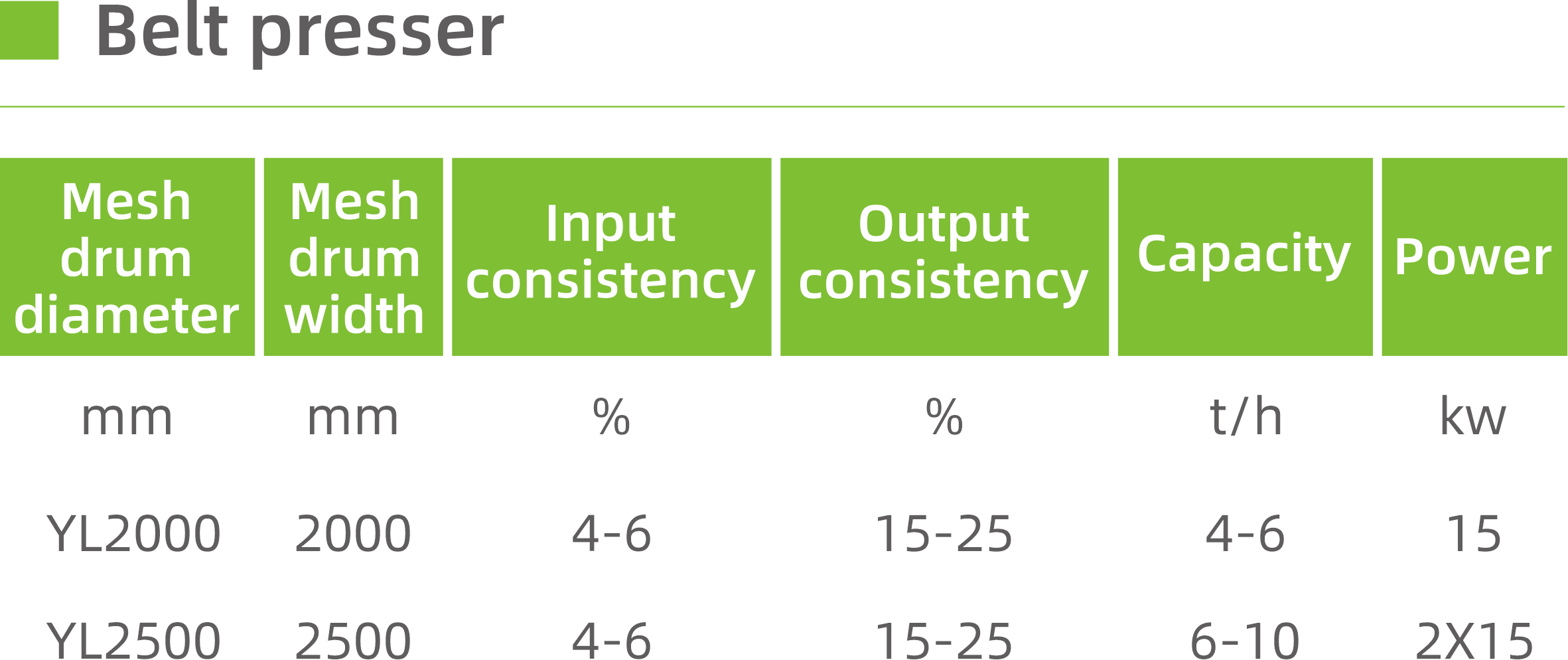
◆Unique double-wire dehydration design
◆Less occupied area,strong dewater ability
◆Main dewatering roll use the orifice structure,and benefit for pulp consistency
◆Rubber coating guide rollers, good corrosion prevention, generally use 10 years.
◆Hydraulic pressure device,consistency upgrading fast.
◆Automatically pneumatic correct wire as deviation ,reduce the workers’ labor intensity
◆Lower power consumption compared to screw press
The double-wire press mainly includes: headbox, wedge-shaped dewatering zone, second S-shaped nip, third, fourth and fifth nip, conveying screw, driving device, mesh cloth deviation correction device, water spraying device, mesh cloth Tensioner, guard, etc.
This type of double-wire pulping machine is mainly suitable for high dryness commercial pulp, and the highest concentration can reach 40%.
The pulp is stably and evenly distributed from the headbox to the screen. First, it enters the wedge-shaped dewatering area gradually closed by the double screen through self-weight dehydration. It enters the wedge-shaped area of the double screen and is initially dehydrated by extrusion, and then enters the two S-shaped presses. In this area, the pulp is subjected to a small linear pressure to prevent pulp from being crushed and can be further dehydrated, and then passes through two 500mm diameter pressure rollers. The fourth nip is dehydrated, and finally enters a high-line press roll with a diameter of 600mm to complete the fifth nip dehydration, and the pulp reaches the final dryness.
According to the different functions of each nip, the nip roll adopts the structure of metal hard roll, rubber-coated roll and grooved roll respectively.
Reasonably designed drip trays are used for splash water, squeeze dewatering and spray water discharge.
The filter screen tensioning device uses two cylinders to push the tension rollers synchronously to tension the filter screen. In order to make the filter screen evenly tensioned, a set of synchronizing gears and a synchronizing shaft are installed in the mechanism.
The filter screen deviation correction device uses the deviation correction sensor to detect the deviation amount of the filter screen. At the same time, a pneumatic valve automatically adjusts the air intake, so that the deviation-correcting air spring installed at one end of the screen guide roller acts, and the spring pushes the screen guide roller to move and pull the screen back from the deviation. At the same time, it is equipped with a deviation alarm. When the deviation of the filter screen is too large, it will alarm first and then stop.
The transmission mechanism adopts two motors to drive the upper and lower mesh belts, and drives the upper and lower mesh belts to run synchronously through a reducer and a universal joint.
The filter cleaning device is equipped with two swinging spray pipes up and down to clean the upper and lower filters respectively.
Each nip is pressurized by a air spring to ensure the required line pressure of each nip. After the pulp leaves the last nip, the scraper scrapes the pulp to the conveying screw and enters the next process. The conveying screw is driven by an independent reduction motor, and a zero-speed switch is installed, which is interlocked with the main drive mechanism.
Reasonable design of various forms of shields, one is for safety, and the other is to prevent the leakage of pulp water to the maximum extent.The rack adopts corrosion-resistant paint process.
